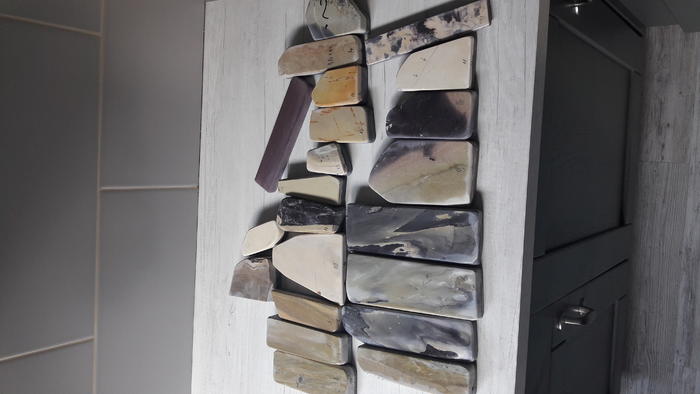Results 31 to 35 of 35
Thread: coticule Veins
-
12-23-2017, 05:02 PM #31Junior Member

- Join Date
- Dec 2017
- Posts
- 15
Thanked: 0
-
12-23-2017, 05:22 PM #32

Well quartz is an abrasive, typical for a lot of whetstones i.e. thuringians and novaculite stones - for example Arkansas. In Coticules quartz is not the main abrasive but garnets (spessartine crystals). Quartz is undesired in Coticules because the particles are too large most of the time in the coticule veins. Means, they produce deep scratches and can even destroy a razor edge. But of course that depends on the coticule you have in hand. If the quartz particles are small enough they can also enhance the sharpening process. Problem is - you cannot see the size of the particles with your naked eye and even with a lupe or microskop you will have problems to recognize and clasify the quartz.
So practise and trial is the only way to find out. Best not with a razor first, but a strong knife.
-
The Following User Says Thank You to hatzicho For This Useful Post:
Geezer (12-24-2017)
-
12-23-2017, 08:42 PM #33Junior Member

- Join Date
- Dec 2017
- Posts
- 15
Thanked: 0
-
12-25-2017, 05:54 PM #34Senior Member

- Join Date
- Feb 2014
- Location
- Oklahoma City
- Posts
- 220
Thanked: 71
Beautiful stones, love your posts.
-
12-26-2017, 11:14 AM #35

Yes coticule have lot of different vein . Its interesting. See a small view of my collection .



 36Likes
36Likes LinkBack URL
LinkBack URL About LinkBacks
About LinkBacks







 Reply With Quote
Reply With Quote